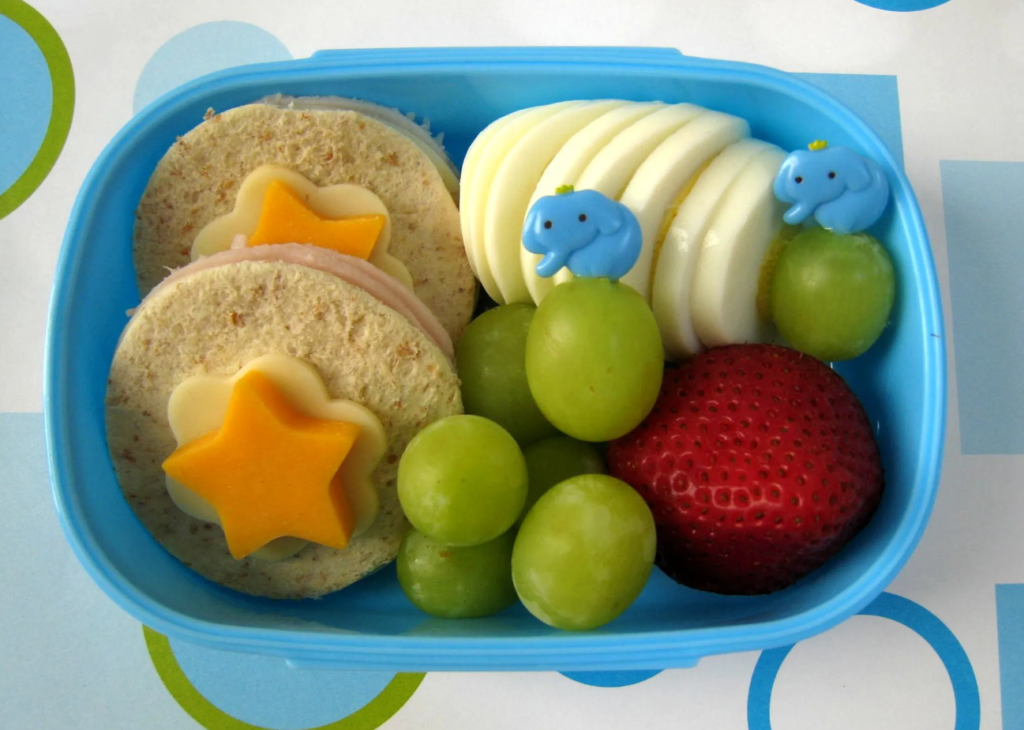As the new school year begins, parents and caregivers seek ways to nourish kids’ bodies. Healthy snacks and meals are a must for the health, comfort, energy levels, and brain development of growing kids.
According to the National Institutes of Health (NIH), the best time to introduce kids to healthy eating habits is when they’re young. The NIH developed a program called “We Can!” for caregivers and communities, to help kids aged 8-13 maintain a healthy weight by encouraging healthy eating habits, physical activity, and limited screen time.
Some of the program’s nutrition topics are added sugar, nutritional label facts, tips for picky eaters, ways to eat more produce, and more. For more information, visit http://wecan.nhlbi.nih.gov, or call 1-866-35-WECAN.
Young people should have about 1,500 to 2,000 calories each day, made up of meals and snacks of healthy, high-nutrient foods like fruit, veggies, nuts, whole grains, and low-fat protein. This daily calorie count also includes calories from beverages. Healthy snacks and meals will boost a young person’s energy and prevent overeating at the next meal. Now consider “junk food,” food that is high in sugar, salt, oil and white flour, and low in fiber and nutrients like vitamins and minerals.
Large amounts of these foods, including chips, fries, sweets, and sweetened drinks, may well lead to weight gain. The rate of obesity in kids is higher than ever before. Large amounts of high-calorie, low-nutrient foods and drinks raise blood sugar and damage our insulin hormone (which regulates our bodies’ energy supplies), paving the way for Type 2 Diabetes. Excess “junk food” and drinks are also responsible for vitamin deficiencies, headaches, stomach aches, constipation or diarrhea, tiredness and difficulty concentrating.
As a caregiver, you have the power to guide your young people, from toddlers to teens, toward healthy snacks foods and meals. Listed below are some healthy and quick back-to-school snacks and meals.
Healthy Snack Options
- Fresh fruit in a bowl or on a skewer with yogurt dip
- Whole-grain crackers with peanut butter or cheese
- Trail mix with nuts and dried fruit; you can even include some chocolate.
- Homemade energy balls or bars made with oats and honey
Nutritious Meal Ideas
- Protein, starch, and low carb-vegetables in these portions
- Sandwiches on whole grain bread with proteins like deli meat or chicken, peanut butter, egg, hummus and veggies like lettuce, tomatoes and cucumber
- Soup and salad combos
- Chili, stews or curries that include vegetable and protein (beans or meat). You can include a starch like rice, noodles or potatoes inside or serve a small portion on the side
- Overnight oats with fruit and nuts or regular hot oatmeal with fruit, nuts, and small amounts of sweetener
- Scrambled eggs and veggie or an egg omelet and veggies
Tips to Save Time:
- Plan and prep meals on the weekends. Cook for an hour and you need only to reheat on school nights!
- Buy frozen steamable veggies, which are already cleaned and pre-cut. Just steam in microwave or pot
- Pair your starch and protein with a salad of leafy greens and shredded carrots or whole cherry tomatoes. Salads, which are eaten raw, can be much quicker than cooking vegetables. Try serving two cups of salad alongside a cup of cooked pasta and meat sauce.
Prepare your young ones for a successful and healthy school year by incorporating these nutritious snack and meal suggestions into their daily routine. Happy, healthy eating!
Naomi Pemberton is a senior project manager at Montefiore’s Office of Community & Population Health.





